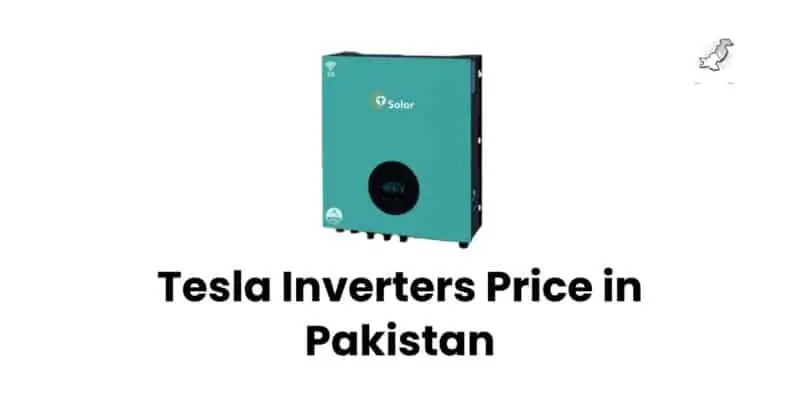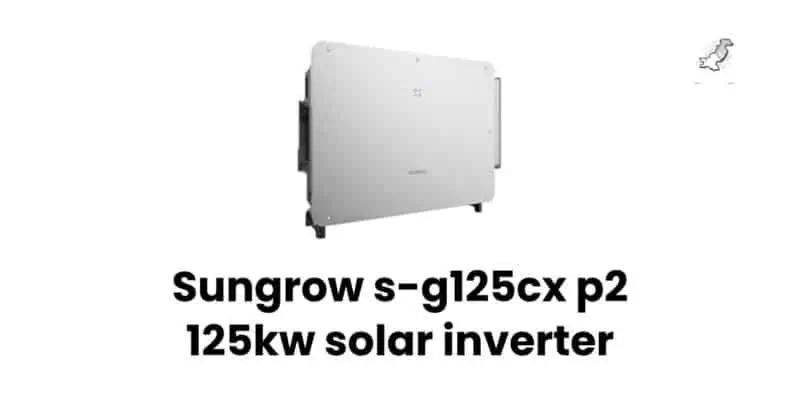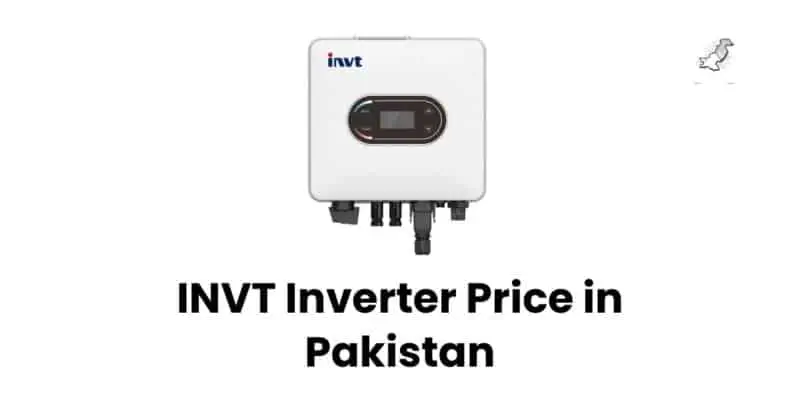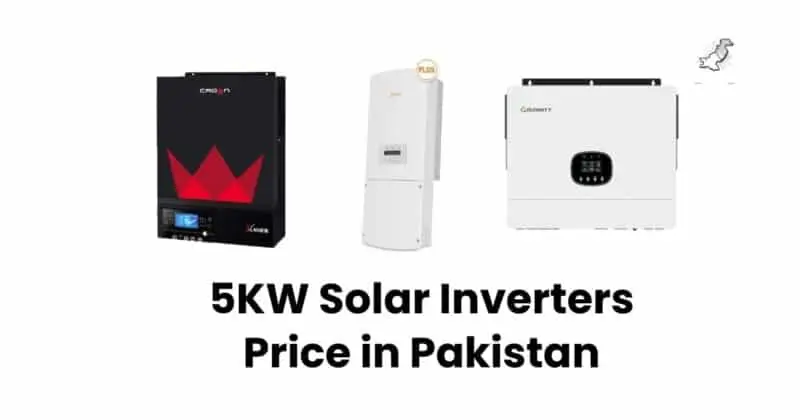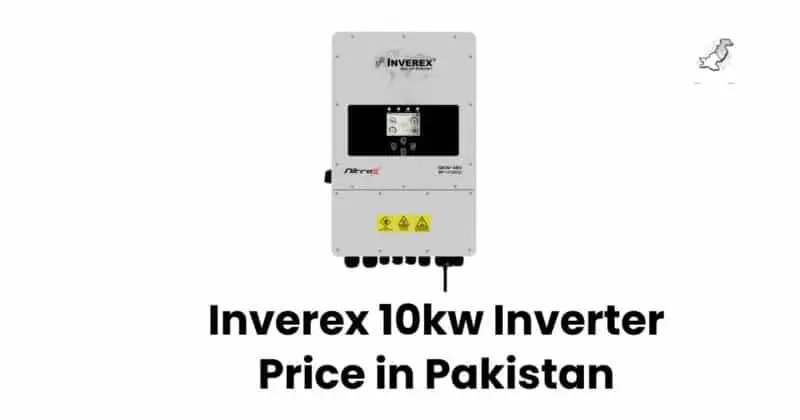Solis Solar Inverter Price in Pakistan 2025: Complete Pricing Guide
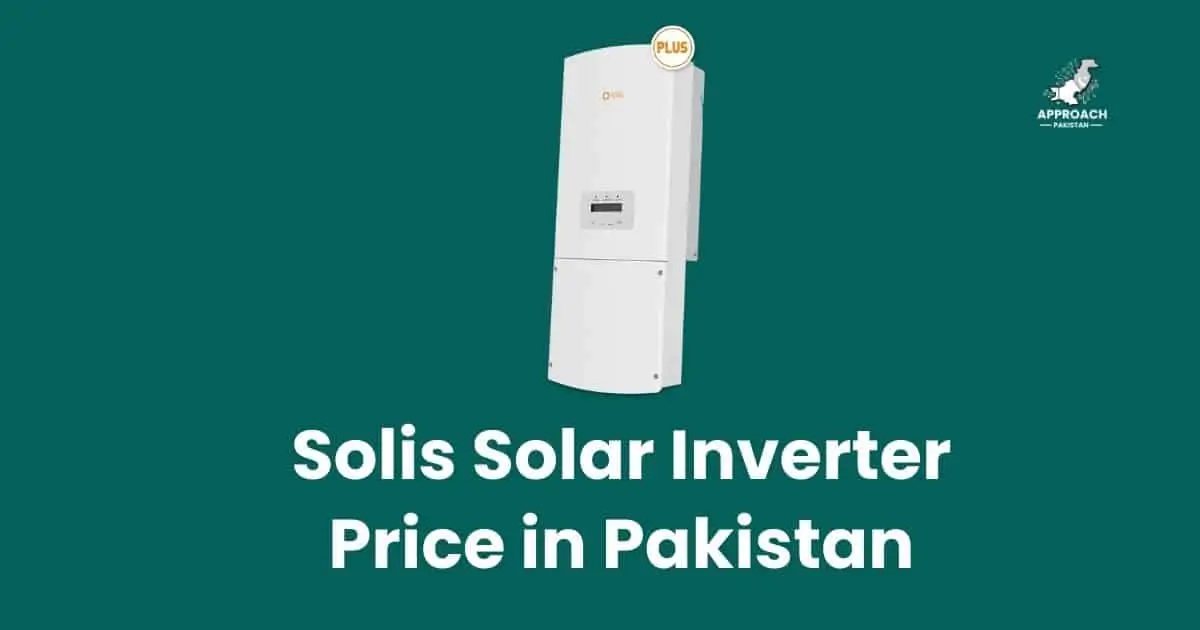
Solis inverter prices in Pakistan range from PKR 125,000 for a 5kW on-grid model to PKR 1,540,000 for a 50kW hybrid system. Popular 6kW hybrid models cost around PKR 244,000-273,500, while 10kW on-grid inverters are priced between PKR 212,000-260,000.
Introduction
Tired of electricity bills that eat half your monthly salary? You’re not alone. Pakistani households spend an average of PKR 15,000-25,000 monthly on electricity bills. That’s PKR 300,000 yearly just to keep the lights on.
Power outages disrupting your business meetings? Kids can’t study because the fan stopped working? These problems end with solar energy. But here’s the catch – choosing the wrong inverter can cost you thousands in wasted investment.
What are Solis Inverters?
Solis inverters are Chinese-manufactured solar power conversion devices that transform DC electricity from solar panels into AC electricity for home use. They’re produced by Ginlong Technologies, the world’s largest inverter manufacturer since 2005.
Think of an inverter as your solar system’s brain. It takes raw sunlight captured by panels and turns it into electricity that powers your TV, AC, and refrigerator. Without an inverter, solar panels are just expensive roof decorations.
Why Choose Solis for Solar Systems in Pakistan?
Solis inverters handle Pakistan’s tough conditions like champions. Summer temperatures hit 50°C in Karachi. Dust storms in Punjab. Voltage fluctuations that fry electronics. Regular inverters give up. Solis keeps running.
Here’s what makes them special:
- 5-year warranty with local service support
- 98% efficiency rating (highest in the market)
- IP66 protection against dust and rain
- Wide voltage range handles grid fluctuations
Benefits of Solar Energy in Pakistan
Solar energy slashes your electricity bills by 70-80%. That PKR 20,000 monthly bill? It drops to PKR 4,000. You pocket PKR 16,000 every month. That’s PKR 192,000 yearly savings.
Net metering lets you sell excess electricity back to the grid. Your roof becomes a mini power plant. NEPRA approved this system nationwide. You earn money while reducing bills.
Solis Inverter Price List Pakistan 2025
2.1 On-Grid Solis Inverter Prices
| Model | Capacity | Price Range (PKR) | Efficiency | Best For |
| Solis 3P5K-4G-LV | 5kW | 125,000 – 165,000 | 98% | Small homes |
| Solis 3P10K-4G-LV | 10kW | 212,000 – 260,000 | 98.7% | Medium homes |
| Solis 3P15K-LV | 15kW | 200,000 – 259,000 | 97% | Large homes |
| Solis 3P20K-LV | 20kW | 220,000 – 318,000 | 97% | Small businesses |
| Solis 25K-LV | 25kW | 270,000 – 405,000 | 97% | Commercial |
| Solis 30K-LV | 30kW | 375,000 – 472,000 | 97% | Industrial |
| Solis 50K | 50kW | 400,000 – 665,000 | 98.8% | Large commercial |
The Nitrox series represents Inverex’s premium line. These units feature dual MPPT tracking and touch screen displays. They handle up to 18,000W solar input while maintaining 97.6% efficiency.
5kW Solis On-Grid Inverter Price
The 5kW Solis on-grid inverter costs PKR 125,000-165,000. Perfect for homes with 1,500-2,000 monthly units consumption. It handles 4-5 rooms comfortably including 1 AC, fans, lights, and basic appliances.
This model pays for itself in 2.5-3 years through electricity savings. Monthly savings reach PKR 8,000-12,000 depending on your usage pattern.
10kW Solis On-Grid Inverter Price
The 10kW Solis on-grid inverter price in Pakistan ranges from PKR 212,000 to PKR 260,000. This capacity suits homes consuming 2,500-3,500 monthly units and can power 2-3 ACs along with all household appliances efficiently.
The S5-GR3P10K model features dual MPPT design for maximum energy harvest. Its 98.7% efficiency means minimal power loss during conversion. WiFi monitoring lets you track performance from your smartphone.
15kW Solis On-Grid Inverter Price
Large homes need the 15kW capacity. Prices range PKR 200,000-259,000. It handles 3-4 ACs, electric geysers, and heavy appliances without breaking a sweat.
The wide MPPT voltage range (160V-850V) works with different panel configurations. You get flexibility in system design while maintaining high efficiency.
20kW Solis On-Grid Inverter Price
Small businesses choose 20kW systems. Price bracket: PKR 220,000-318,000. Perfect for shops, offices, or large homes with swimming pools and electric heating.
Four MPPT inputs optimize energy collection from multiple panel strings. Low harmonic distortion (THDi<3%) protects sensitive electronics from power quality issues.
25kW Solis On-Grid Inverter Price
Commercial establishments prefer 25kW capacity. Investment ranges PKR 270,000-405,000. Suitable for restaurants, small factories, or large office buildings.
Anti-resonance technology supports over 6MW parallel installation. Multiple units work together seamlessly for massive solar farms.
30kW Solis On-Grid Inverter Price
Industrial applications demand 30kW power. Budget PKR 375,000-472,000 for this beast. It powers manufacturing units, cold storage facilities, or large commercial complexes.
Intelligent redundant fan-cooling prevents overheating during peak summer months. Robust design withstands industrial environments.
50kW Solis On-Grid Inverter Price
Mega-scale projects use 50kW inverters. Price range: PKR 400,000-665,000. Perfect for large factories, shopping malls, or community solar projects.
Maximum 98.8% efficiency means minimal energy waste. Perfect commercial-side monitoring solution tracks performance across multiple installation sites.
2.2 Hybrid Solis Inverter Prices
| Model | Capacity | Price Range (PKR) | Battery Support | Backup Time |
| S6-EH1P6K-L-PLUS | 6kW | 244,000 – 273,500 | Yes | 4-6 hours |
| S6-EH1P8K-L-PRO | 8kW | 322,000 – 455,000 | Yes | 3-5 hours |
| Hybrid 10kW | 10kW | 580,000 – 650,000 | Yes | 2-4 hours |
| Hybrid 12kW | 12kW | 600,000 – 662,000 | Yes | 3-5 hours |
| Hybrid 15kW | 15kW | 700,000 – 733,000 | Yes | 2-4 hours |
6kW Solis Hybrid Inverter Price
The Solis 6kW hybrid inverter price in Pakistan sits between PKR 244,000-273,500. This model combines grid-tie functionality with battery backup, providing uninterrupted power during outages while reducing electricity bills significantly.
Hybrid systems cost 30-40% more than regular on-grid inverters. But you get energy independence. When the grid fails, your home keeps running. No more spoiled food in fridges. No interrupted online work.
The IP66 rating protects against monsoon rains and dust storms. Automatic UPS switching takes just 10 seconds. Your computers won’t even notice the power cut.
8kW Solis Hybrid Inverter Price
Larger homes need 8kW hybrid capacity. Prices range PKR 322,000-455,000. Support up to 32A MPPT current handles high-power 210mm solar panels efficiently.
Six customizable charge/discharge time settings optimize battery usage. Charge batteries during cheap daytime grid electricity. Use stored power during expensive evening peak hours.
Parallel operation allows up to 48kW total capacity. Start with one unit. Add more as your needs grow. Scalable solution saves initial investment.
10kW Solis Hybrid Inverter Price
The Solis 10kW hybrid inverter price in Pakistan ranges PKR 580,000-650,000. This capacity suits large homes or small businesses requiring both grid-tie savings and reliable backup power for critical loads.
UPS-level switching time under 4ms ensures seamless power transfer. Sensitive electronics like computers and medical equipment remain protected during grid fluctuations.
190A charge-discharge current provides high energy throughput density. Fast charging reduces battery degradation while ensuring adequate backup power.
12kW Solis Hybrid Inverter Price
Three-phase homes choose 12kW hybrid systems. Investment: PKR 600,000-662,000. Supports maximum 24kW PV array size for oversized solar installations.
Dual MPPT channels handle 20A each. Perfect for split roof installations where panels face different directions. East-west configurations maximize daily energy production.
Generator connectivity extends backup duration during prolonged outages. Automatic generator start/stop saves fuel while maintaining battery charge levels.
15kW Solis Hybrid Inverter Price
Large residential or small commercial installations prefer 15kW capacity. Budget PKR 700,000-733,000 for complete energy independence.
Peak shaving control reduces demand charges. Battery discharges during expensive peak hours. Grid electricity usage drops during high-tariff periods.
Unbalanced load support handles single-phase equipment on three-phase systems. Flexibility accommodates existing electrical installations without rewiring costs.
2.3 City-wise Price Variations
Solis Inverter Prices in Karachi
Karachi enjoys 5-10% lower prices due to port proximity. Import costs reduce transportation expenses. Competitive dealer network drives prices down further.
Average dealer markup: 15-20% over wholesale rates. Direct importer purchases save additional 10-15% but void local warranty support.
Solis Inverter Prices in Lahore
Punjab’s commercial hub sees moderate pricing. Prices sit 5% above Karachi levels. Strong dealer competition keeps margins reasonable.
Industrial demand drives bulk purchase opportunities. Businesses negotiate better rates for multiple-unit installations.
Solis Inverter Prices in Islamabad
Capital city commands premium pricing. Costs run 10-15% above national average. Higher business expenses and affluent customer base support elevated prices.
Government incentives occasionally offset higher costs. Solar policy benefits apply regardless of purchase location.
Solis Inverter Prices in Peshawar
Northern city faces logistics challenges. Prices average 15-20% above Karachi levels. Limited dealer network reduces competition.
Border trade sometimes offers unofficial import channels. However, warranty support becomes questionable through unofficial routes.
Detailed Product Reviews
When evaluating 540W solar panels in Pakistan’s market, consider these critical specifications:
3.1 Popular Models Analysis
Solis S5-GR3P10K Review
The S5-GR3P10K represents value engineering at its finest. PKR 212,000-260,000 buys you enterprise-grade reliability for residential use.
Key strengths include 98.8% maximum efficiency and IP66 outdoor protection. Wide MPPT voltage range (160-1000V) accommodates various panel types. Natural convection cooling eliminates fan noise and maintenance.
Weaknesses center on limited communication options. Basic RS485 interface requires additional WiFi modules for smartphone monitoring. LCD display provides local information only.
Real-world performance in Lahore installation: 8.5kWh daily generation with 12 x 450W panels. Summer efficiency stays above 96% despite 45°C ambient temperatures.
Solis S6-EH1P6K-L-PLUS Review
This hybrid model costs PKR 244,000-273,500 but delivers energy independence. Single-phase design suits most Pakistani homes perfectly.
Outstanding features include automatic UPS switching and generator connectivity. Multiple input methods support diesel generators during extended outages. Peak shaving control reduces electricity bills even further.
Battery compatibility spans lead-acid and lithium technologies. Six customizable charge/discharge windows optimize energy arbitrage. Buy cheap electricity at night. Use stored power during expensive peak hours.
Installation feedback from Islamabad: 4-hour backup time with 400Ah battery bank. Seamless grid/battery switching during load shedding. Monthly bill reduction: 65%.
Solis S6-EH1P8K-L-PRO Review
Premium hybrid option priced PKR 322,000-455,000. Professional-grade features justify the investment for demanding applications.
High MPPT current (32A) supports latest 210mm solar panels. Six-stage battery management extends battery life significantly. Intelligent charge algorithms prevent overcharging damage.
Parallel operation capability allows system expansion. Start with single 8kW unit. Add more as energy needs grow. Maximum 48kW combined capacity suits large homes or small businesses.
Performance data from Karachi office: 12kWh daily solar generation. 6-hour backup during outages. 70% electricity bill reduction. ROI period: 3.2 years.
3.2 Model Comparisons
On-Grid vs Hybrid Solis Inverters
On-grid inverters cost 30-40% less than hybrid models but cannot provide backup power during outages. Hybrid inverters combine grid-tie functionality with battery storage, offering energy independence at higher initial investment.
On-grid systems make sense for areas with reliable electricity supply. Focus purely on bill reduction through net metering. Faster payback period due to lower investment.
Hybrid systems suit load shedding areas. Energy independence justifies higher costs. Battery backup maintains productivity during outages.
Cost comparison for 10kW capacity:
- On-grid: PKR 212,000-260,000
- Hybrid: PKR 580,000-650,000
- Difference: PKR 368,000-390,000
Single Phase vs Three Phase Models
Pakistani homes typically use single-phase connections up to 10kW load. Three-phase becomes mandatory for higher capacities or balanced loading requirements.
Single-phase advantages:
- Lower installation complexity
- Reduced electrical modifications
- Compatible with existing home wiring
Three-phase benefits:
- Better load distribution
- Higher efficiency at large capacities
- Reduced cable thickness requirements
Upgrade costs from single to three-phase: PKR 25,000-40,000 including utility charges and electrical work.
IP65 vs IP66 Protection Ratings
IP66 rated Solis inverters cost 10-15% more than IP65 models but provide superior protection against dust storms and heavy rainfall. IP66 ensures complete dust sealing and high-pressure water jet protection.
Pakistan’s climate demands robust protection. Karachi’s salt air corrodes electronics. Punjab’s dust storms clog ventilation. Monsoon rains test sealing integrity.
IP65 rating:
- Dust protected (limited ingress allowed)
- Low-pressure water jets
- Suitable for covered installations
IP66 rating:
- Completely dust-tight
- High-pressure water jets
- Outdoor installation ready
Investment difference: PKR 15,000-25,000 for IP66 upgrade. Worth it for exposed rooftop installations.
Technical Specifications Guide
4.1 Key Features of Solis Inverters
MPPT Technology Explained
Maximum Power Point Tracking (MPPT) technology optimizes solar panel output by continuously adjusting voltage and current to extract maximum available power. Solis inverters feature dual or quad MPPT designs for superior energy harvesting.
Think of MPPT as a smart gear system in your car. It finds the perfect RPM for maximum fuel efficiency. Similarly, MPPT finds the perfect voltage for maximum solar power.
Cloud shadows reduce panel output unevenly. MPPT tracks each string independently. Shaded panels don’t affect sunny ones. Total system output stays higher.
Efficiency comparison:
- PWM controllers: 75-80% efficiency
- Basic MPPT: 92-95% efficiency
- Solis MPPT: 96-98% efficiency
Daily energy gain with Solis MPPT: 15-20% over basic controllers. That’s 3-4 extra kWh daily for a 10kW system.
WiFi Monitoring Capabilities
Modern Solis inverters include WiFi connectivity for smartphone monitoring. SolisCloud app provides real-time performance data from anywhere worldwide.
Key monitoring features:
- Live power generation display
- Daily/monthly energy reports
- System fault notifications
- Weather integration for forecasting
- Multiple site management capability
Installation alerts notify you immediately when problems occur. Loose connections reduce output. Monitoring catches issues before they become expensive failures.
Data retention spans 20+ years. Historical analysis helps optimize system performance. Seasonal patterns guide maintenance scheduling.
Grid-Tie Functionality
Grid-tie systems connect directly to utility power lines. Excess solar energy flows back into the grid. You earn credits through net metering programs.
Synchronization requirements ensure safety. Inverter matches grid frequency (50Hz in Pakistan). Voltage stays within acceptable limits (220V ±10%). Anti-islanding protection disconnects during outages.
Grid support functions help stabilize local power quality. Reactive power compensation improves voltage regulation. Smart inverters support modern grid requirements.
Export limitation features comply with utility requirements. Some areas restrict export capacity. Inverter programming prevents violation of connection agreements.
Safety Features and Protections
Solis inverters include comprehensive protection systems. Multiple safety layers prevent damage from electrical faults or environmental hazards.
DC protection features:
- Reverse polarity protection
- Overcurrent protection
- Arc fault detection (AFCI)
- Ground fault monitoring
- Insulation resistance testing
AC protection systems:
- Overvoltage/undervoltage protection
- Frequency deviation protection
- Anti-islanding detection
- Surge protection devices (SPD)
- Temperature monitoring
Fire prevention measures reduce insurance concerns. Arc fault detection stops electrical fires before they start. Insurance companies offer discounts for AFCI-equipped systems.
4.2 Efficiency and Performance
Maximum Efficiency Ratings
Solis inverters achieve 96-98.8% maximum efficiency ratings, meaning minimal energy loss during DC to AC conversion. Higher efficiency translates to more electricity generation and faster return on investment.
Efficiency varies with load conditions. Peak efficiency occurs at 30-70% rated power. Light morning loads may see 94-95% efficiency. Midday peak generation achieves maximum ratings.
Temperature affects efficiency significantly. Every 10°C temperature rise reduces efficiency by 0.5%. Proper ventilation maintains performance during hot summers.
Comparison with competitors:
- Budget inverters: 92-94% efficiency
- Mid-range models: 95-97% efficiency
- Solis premium: 96-98.8% efficiency
Annual energy difference for 10kW system: 500-800 kWh more with Solis. That’s PKR 50,000-80,000 additional savings over 10 years.
MPPT Voltage Ranges
Wide MPPT voltage ranges provide installation flexibility. Different panel types require different voltage windows. Solis accommodates various configurations.
Typical MPPT ranges:
- Entry models: 160-500V
- Standard models: 160-850V
- Premium models: 200-1000V
String design benefits from wide ranges. More panels per string reduce wiring costs. Fewer combiner boxes simplify installations. Lower labor expenses offset higher inverter costs.
Temperature coefficient considerations matter in Pakistan. Hot weather reduces panel voltage. Wide MPPT ranges maintain tracking even at 70°C cell temperatures.
Operating Temperature Ranges
Solis inverters operate reliably from -25°C to +60°C ambient temperature, making them suitable for Pakistan’s extreme climate conditions from northern mountains to southern deserts.
Derating occurs above 50°C ambient temperature. Output power reduces gradually to prevent component damage. Proper ventilation delays derating onset.
Installation recommendations:
- Minimum 20cm clearance around unit
- Avoid direct afternoon sun exposure
- Install under shade or weather protection
- Ensure adequate airflow circulation
Natural convection cooling eliminates fan maintenance. No moving parts mean longer lifespan. Silent operation suits residential installations.
Performance testing in Multan (summer peak 48°C): Full power output until 52°C ambient. Gradual derating to 90% at 55°C. No shutdowns during extreme weather.
Warranty Information
Standard Solis warranty covers 5 years parts and labor. Extended warranties available up to 20 years for premium models. Local service centers handle warranty claims.
Warranty exclusions include:
- Lightning damage (unless properly grounded)
- Physical damage from accidents
- Unauthorized modifications or repairs
- Normal wear from environmental exposure
Performance warranties guarantee minimum power output over time. Typical degradation: Less than 0.5% annually. 25-year performance guarantee standard.
Service response times vary by location:
- Major cities: 24-48 hours
- Secondary cities: 3-5 days
- Remote areas: 1-2 weeks
Remote diagnostics resolve 60% of issues without site visits. Firmware updates fix software problems. Physical replacement needed for hardware failures only.
Installation and Setup
5.1 Installation Requirements
Electrical Specifications
Solis inverter installation requires dedicated AC disconnect switch, properly sized DC combiner box, and grounding system meeting local electrical codes. Professional installation ensures safety and warranty compliance.
AC wiring specifications:
- Copper conductors only (aluminum prohibited)
- Minimum 10mm² for up to 10kW capacity
- 16mm² for 15-25kW systems
- Separate ground conductor required
DC input requirements:
- Maximum 15A per MPPT input
- Series fuse protection for each string
- Rapid shutdown device within 3 meters
- DC disconnect accessible to inverter
Grounding electrode systems prevent electrical shock. Equipment grounding bonds all metal components. System grounding provides fault current path. Both systems required for safety.
Electrical permit requirements vary by city. Karachi requires KESC approval. Lahore needs LESCO clearance. Islamabad follows CDA guidelines. Check local requirements before installation.
Mounting Guidelines
Proper mounting ensures longevity and performance. Wall mounting suits most residential applications. Ground mounting works for larger commercial systems.
Mounting location criteria:
- Avoid direct afternoon sun exposure
- Minimum 1.5m height from ground
- Easy access for maintenance
- Protection from physical damage
- Adequate ventilation clearance
Structural requirements depend on inverter weight. 10kW models weigh 25-30kg. Wall mounting needs solid masonry or concrete. Steel frame mounting distributes loads better.
Vibration isolation prevents damage from building movement. Rubber gaskets absorb minor vibrations. Flexible conduit accommodates thermal expansion.
Weather protection extends equipment life. Simple shed roofs deflect rain and snow. Ventilated enclosures allow airflow while blocking weather.
Safety Precautions
Solar installation involves high voltage DC electricity that can cause fatal shock even in cloudy conditions. Professional installation by certified technicians ensures safety and code compliance.
Personal protective equipment (PPE) requirements:
- Insulated gloves rated for DC voltage
- Safety glasses with side protection
- Non-conductive footwear
- Fall protection for roof work
Lockout/tagout procedures prevent accidental energization. DC disconnect switches at panels and inverter. AC disconnect at electrical panel. Multiple isolation points required.
Arc flash hazards exist during installation and maintenance. Proper PPE and procedures prevent serious injuries. Never work on live DC systems. Always verify zero energy state.
First aid training helps installers respond to emergencies. Basic CPR and electrical shock response. Fire extinguisher usage for electrical fires. Emergency contact information posted.
5.2 Net Metering Compatibility
NEPRA Approval Status
All Solis inverters carry NEPRA type approval for net metering applications in Pakistan. This certification ensures compatibility with utility grid requirements and legal compliance for electricity export.
NEPRA approval process involves rigorous testing. Grid synchronization requirements verify safe operation. Anti-islanding protection prevents safety hazards. Power quality standards maintain grid stability.
Type approval certificate numbers:
- Single-phase models: NEPRA/SLD/2023-45
- Three-phase models: NEPRA/SLD/2023-46
- Hybrid models: NEPRA/SLD/2023-47
Utility acceptance varies by region. WAPDA companies generally accept all NEPRA-approved inverters. Some private utilities maintain additional requirements. Check with local distribution company.
Grid Integration Process
Net metering application involves multiple steps. Documentation requirements vary by utility company. Processing times range 30-90 days depending on system size.
Application requirements typically include:
- Single-line electrical diagram
- Equipment specifications and certificates
- Structural drawings for panel mounting
- Electrical contractor license verification
- Safety compliance declarations
Inspection scheduling follows application approval. Utility engineers verify installation compliance. Meter replacement completes the process. Bidirectional meters track import/export.
Generation limits may apply based on transformer capacity. Some areas restrict export to 70% of contracted load. Oversized systems require additional approvals.
For comprehensive guidance on system types and their net metering benefits, explore our complete on-grid solar system guide to understand how grid-tie functionality maximizes your investment returns.
Documentation Requirements
Proper documentation ensures smooth approval processing. Missing paperwork delays net metering activation. Complete submissions receive priority processing.
Essential documents checklist:
- NEPRA-approved inverter certificates
- Panel manufacturer test reports
- Electrical installation completion certificate
- Building plan approval (for structural mounting)
- Fire department clearance (commercial systems)
Professional installer certification matters. PVQAT (Pakistan Photovoltaic Quality Assurance & Testing) certified installers receive faster approvals. Training programs available through industry associations.
Record keeping requirements span system lifetime. Maintenance logs demonstrate proper care. Performance records help resolve disputes. Equipment warranty documentation proves compliance.
Annual reporting may be required for larger systems. Generation data submission helps utilities plan grid improvements. Simplified reporting forms available online.
Factors Affecting Solis Inverter Prices
6.1 Economic Factors
Dollar Exchange Rate Impact
Currency fluctuations directly affect Solis inverter prices since components are imported from China. Every PKR 10 weakening against USD increases inverter costs by approximately 5-7% within 30-60 days.
Import payment cycles create price lag effects. Dealers purchase inventory 2-3 months in advance. Currency changes impact future shipments while current stock maintains old pricing.
Hedging strategies help larger dealers manage currency risk. Forward contracts lock exchange rates for future deliveries. Smaller dealers face direct exposure to fluctuations.
Historical price correlation:
- 2020: USD-PKR 160, 10kW price PKR 180,000
- 2022: USD-PKR 220, 10kW price PKR 220,000
- 2024: USD-PKR 280, 10kW price PKR 240,000
Price protection periods vary by dealer. Some offer 30-day quote validity. Others adjust prices weekly based on exchange rates. Ask about price guarantees before ordering.
Import Duties and Taxes
Government fiscal policy significantly impacts solar equipment costs. Tax changes can swing prices 10-20% overnight. Understanding tax structure helps predict price movements.
Current tax structure (2024):
- Import duty: 5% (preferential rate)
- Sales tax: 17% (standard rate)
- Additional customs duty: 2%
- Regulatory duty: 0% (suspended for solar)
Provincial tax variations add complexity. Sindh charges additional 1% infrastructure tax. Punjab imposes development surcharges. KPK offers tax holidays for renewable energy.
Tax exemption eligibility depends on system size and usage. Residential systems up to 50kW qualify for exemptions. Commercial systems face standard rates. Industrial installations may qualify for incentives.
Advance ruling applications help clarify tax treatment. File applications before importing equipment. Tax authorities provide written confirmation. Avoid disputes during customs clearance.
Inflation Effects
Pakistan’s inflation rate averages 20-25% annually, directly impacting solar inverter prices through increased labor, transportation, and overhead costs. Raw material inflation in China adds additional 5-10% yearly pressure.
Labor cost inflation affects installation pricing. Skilled electricians demand higher wages. Installation costs rise 15-20% annually. Factor labor inflation into total project costs.
Transportation fuel costs impact delivery pricing. Diesel price volatility affects shipping rates. Remote area deliveries face higher charges. Urban installations enjoy competitive rates.
Overhead cost escalation includes:
- Rent increases for warehouses and showrooms
- Utility cost rises for business operations
- Insurance premium inflation for coverage
- Marketing and advertising cost growth
Dealer margin protection requires periodic price adjustments. Maintaining service quality demands adequate profitability. Expect 2-3 price revisions annually.
6.2 Technical Factors
Inverter Capacity
Currency fluctuations directly affect Solis inverter prices since components are imported from China. ELarger capacity Solis inverters cost more due to higher power semiconductor requirements, but offer better cost per watt economics. Price per watt decreases significantly as capacity increases.
Economy of scale benefits appear above 15kW capacity. Manufacturing costs spread over higher power ratings. Larger transformers and components cost proportionally less.
Cost per watt comparison:
- 5kW: PKR 25-33 per watt
- 10kW: PKR 21-26 per watt
- 25kW: PKR 16-20 per watt
- 50kW: PKR 8-13 per watt
Installation labor scales favorably with size. Single large inverter requires less installation time than multiple small units. Electrical connections reduce proportionally.
Maintenance efficiency improves with larger units. Single point monitoring versus multiple systems. Fewer spare parts inventory requirements. Simplified service procedures.
Single vs Three Phase
Three-phase Solis inverters cost 15-25% more than equivalent single-phase models due to additional power electronics and complexity. However, they offer better efficiency and grid compatibility.
Manufacturing cost differences include:
- Three sets of power conversion circuits
- More complex control algorithms
- Additional protection devices
- Larger enclosure requirements
Grid connection benefits justify higher costs. Better load balancing reduces grid stress. Higher power transfer capability. Improved efficiency at large capacities.
Upgrade path considerations matter for future expansion. Starting with three-phase enables easier capacity additions. Single-phase systems hit utility connection limits sooner.
To understand which system configuration works best for your specific needs, see our detailed comparison of on-grid vs hybrid systems that explains the technical and financial implications of each choice.
Additional Features (WiFi, MPPT)
Advanced features add 10-30% to base inverter costs but provide significant operational benefits. WiFi monitoring costs PKR 15,000-25,000 additional but saves maintenance expenses.
MPPT channel pricing:
- Single MPPT: Base price
- Dual MPPT: +PKR 20,000-30,000
- Quad MPPT: +PKR 40,000-60,000
Premium feature cost breakdown:
- WiFi monitoring: PKR 15,000-25,000
- Advanced display: PKR 8,000-12,000
- AFCI protection: PKR 25,000-35,000
- Enhanced warranty: PKR 30,000-50,000
Return on investment for advanced features:
- Remote monitoring saves service calls
- AFCI protection prevents fire damage
- Multiple MPPT increases energy harvest
- Enhanced warranty reduces replacement costs
Feature prioritization depends on application. Residential systems benefit from monitoring and AFCI. Commercial installations prioritize multiple MPPT and advanced displays.
Where to Buy Solis Inverters
7.1 Authorized Dealers
Official Distributors List
Authorized Solis dealers ensure genuine products, valid warranties, and proper technical support. Pakistan has 15+ authorized distributors covering major cities with trained service technicians.
Major authorized distributors:
- Alpha Solar (Lahore, Islamabad)
- Powerhouse Express (Karachi, Lahore)
- W11Stop (Online nationwide)
- Solar Trade Pakistan (Lahore)
- Kamal Solar (Multan, Southern Punjab)
Regional coverage varies by distributor. Urban areas enjoy multiple dealer options. Rural areas may have single authorized representatives. Distance affects service response times.
Dealer verification process prevents counterfeit products. Check authorization certificates before purchase. Verify dealer status with Solis Pakistan office.
Authorized dealer benefits include:
- Factory-trained technical staff
- Genuine product guarantees
- Full warranty coverage
- After-sales service support
- Latest firmware updates
Dealer certification requirements ensure competency. Technical training programs maintain service quality. Regular audits verify compliance standards. Customer satisfaction metrics influence authorization renewal.
For verified dealer networks and warranty coverage across Pakistan, explore our comprehensive solar inverter dealer directory to find authorized representatives in your area.
Warranty Coverage
Factory warranty applies only through authorized channels. Unauthorized dealers void warranty coverage automatically. Save money upfront, lose thousands in potential claims.
Warranty claim process involves:
- Initial troubleshooting with dealer technician
- Remote diagnostics through monitoring system
- On-site inspection if required
- Replacement unit dispatch for confirmed failures
- Installation and commissioning verification
Service level agreements define response timeframes. Tier-1 cities: 48-72 hours. Tier-2 cities: 5-7 days. Remote locations: 10-14 days. Emergency repairs receive priority handling.
Warranty exclusions include:
- Lightning damage without proper surge protection
- Physical damage from accidents or vandalism
- Modifications by unauthorized personnel
- Operation outside specified parameters
- Normal wear from environmental exposure
Extended warranty options provide additional coverage. 10-year extended warranty costs 8-12% of product price. 20-year coverage available for premium models. Cost-benefit analysis depends on installation environment.
After-sales Support
Technical support quality varies significantly between dealers. Authorized distributors maintain service centers with factory-trained technicians. Independent dealers rely on third-party service providers.
Service capabilities include:
- Remote monitoring and diagnostics
- Firmware updates and programming
- Component replacement and repair
- Performance optimization consulting
- System expansion planning assistance
Spare parts availability affects service quality. Authorized dealers maintain inventory for common replacements. Independent suppliers face longer lead times. Critical components may require factory orders.
Training programs ensure technician competency. Solis conducts regular certification courses. Updated training covers new product features. Continuing education maintains authorization status.
Customer feedback systems help improve service quality. Online rating platforms track dealer performance. Manufacturer surveys monitor satisfaction levels. Poor performing dealers lose authorization rights.
7.2 Online vs Offline Purchase
Price Comparisons
Online Solis inverter purchases typically cost 5-15% less than physical stores due to lower overhead expenses, but may lack installation services and immediate technical support.
Online platform advantages:
- Lower operational costs enable competitive pricing
- Wider product selection across multiple brands
- Easy price comparison between sellers
- Customer reviews provide purchase guidance
- Bulk purchase discounts for multiple units
Physical store benefits:
- Hands-on product examination before purchase
- Immediate technical consultation available
- Bundled installation service packages
- Local warranty service convenience
- Established business relationships for support
Price comparison factors:
- Product cost (online typically 5-15% lower)
- Shipping charges (PKR 3,000-8,000 depending on size)
- Installation service (PKR 15,000-30,000 additional)
- Technical support access (ongoing relationship value)
- Warranty service convenience (local vs remote)
Financing options vary between channels. Physical stores offer installment plans through banking partnerships. Online platforms provide digital lending options. Government subsidy programs may prefer registered dealers.
Delivery Options
Shipping logistics affect total project costs and timelines. Urban areas enjoy multiple delivery options. Remote locations face limited choices and higher costs.
Standard delivery options:
- Cargo service: 7-10 days, PKR 3,000-5,000
- Courier service: 3-5 days, PKR 5,000-8,000
- Express delivery: 1-2 days, PKR 8,000-12,000
- Self-pickup: Immediate, No additional cost
Packaging standards protect equipment during transit. Factory packaging includes impact-resistant foam. Additional insurance recommended for high-value shipments. Inspect packages immediately upon delivery.
Installation coordination requires advance planning. Schedule installation teams before equipment arrival. Ensure proper tools and materials availability. Weather conditions affect installation timing.
Remote area challenges include:
- Limited transport infrastructure
- Higher shipping costs due to distance
- Longer delivery timeframes
- Reduced service availability
- Communication difficulties for coordination
Risk management considerations include transit insurance and damage claims procedures. Document packaging condition upon receipt. Report damage immediately to shipping company. Retain all packaging materials for inspection.
Payment Methods
Multiple payment options accommodate different buyer preferences and financial situations. Cash payments often secure 2-3% discounts, while financing options spread costs over 12-60 months with varying interest rates.
Payment method comparison:
| Method | Discount | Processing Time | Security | Financing |
| Cash | 2-3% | Immediate | High | No |
| Bank Transfer | 1-2% | 1-2 days | High | No |
| Credit Card | 0% | Immediate | Medium | Yes |
| Installments | -5-10% | 3-5 days | High | Yes |
| Check | 0% | 3-7 days | Medium | No |
Digital payment platforms gain popularity for convenience. JazzCash and EasyPaisa widely accepted. Bank apps enable instant transfers. QR code payments simplify transactions.
Financing partnerships provide flexible terms. 0% interest promotions during peak seasons. 12-month plans typically charge 18-24% annual rates. 60-month options available for larger systems.
Documentation requirements for financing include:
- CNIC copy and original verification
- Income proof (salary certificate or bank statements)
- Employment verification letter
- Property ownership documents
- Credit history report from credit bureau
Fraud prevention measures protect both buyers and sellers. Verify seller credentials before payment. Use secure payment methods for large transactions. Document all communications and agreements.

